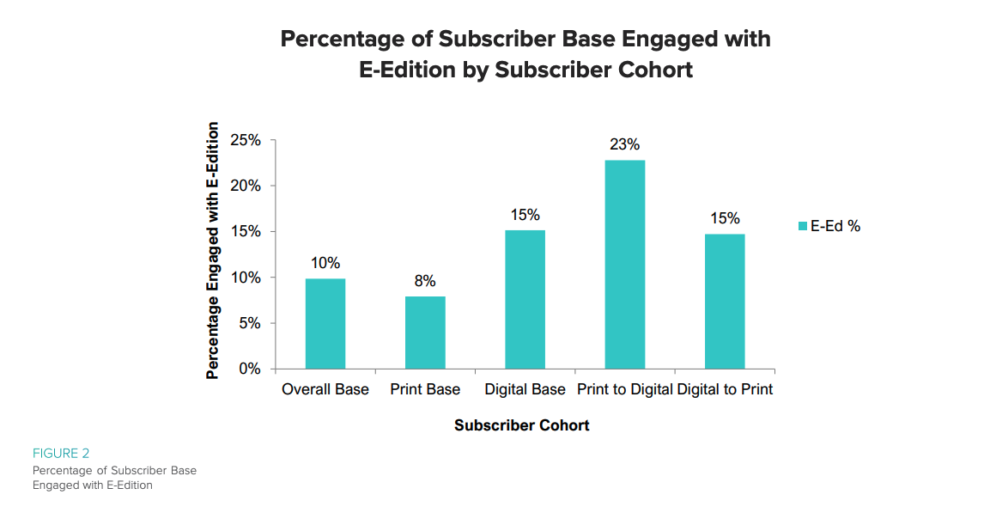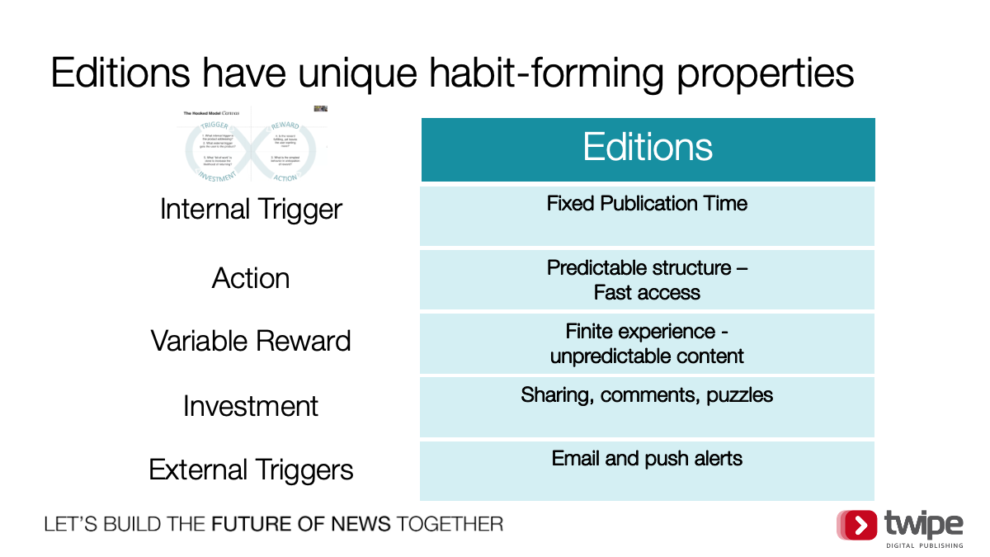The strategic role of ePapers being leveraged across the world
In a world where we are seeing the process of digitalisation tearing through society and people show greater awareness to the problems facing the planet, the ePaper has become a strategic solution for publishers. Throughout the pandemic, ePaper consumption grew worldwide. This is a trend that has continued.
60.6% of publishers told our survey that the edition was important for their current product strategy. Therefore, it is no wonder they are seeing a new lease of life.
ePapers provide a pathway from print to digital in the USA
The ePaper has become less of an ugly duckling and more of a strategic tool. This has particularly been true in promoting conversion from print to digital subscriptions. The more vintage look and feel of an ePaper makes it a more accessible and enticing tool for those reluctant to make the shift from print to digital. Mather Economics found this to be overwhelmingly the case in the USA. The USA, after all, has been a country slow to embrace the power of the ePaper. Their research from August 2021 found that those who have converted from print to digital had the highest engagement rate with the ePaper at 23%. This signifies a big step up from digital base subscribers at 15%.

When exploring their data more closely, the role of the tablet cannot be underestimated. Despite Reuters latest report finding that tablet use is declining, the tablet still plays an important role in engagement with digital products. Mather Economic’s research uncovered that those converting from print to digital had 2.5x the number of page views on tablets when compared to digital-only subscribers. Mather Economics also witnessed that converting subscribers had 45% more unique days engaged with the ePaper over a 30-day period. The habitual nature of edition product readers is clear. Keeping these edition subscribers happy when in a period of transition is a must.
Habitual behaviour is key for retention. Therefore, it is no surprise to see the ePaper playing a key role in digital strategies going forward. In our recent publishers survey, it was promising to see 69.7% of publishers believe digital editions will play an important or very important role in future digital strategies. Leveraging this habitual and conversional power of digital editions is a great chance for publishers to get ahead.

Growth in the German Regions Continues to Surprise
Success for the ePaper has continued beyond the USA. The German market has seen a strong shift to digital for publishers in recent years. Publishers such as Kölner Stadt-Anzeiger Medien, formerly DuMont, have embraced the power of digital to boost their subscriber revenue. Their ePaper has proved to be a particularly useful tool in bringing subscribers from print to digital. They have also been able to monitor their subscribers through Twipe’s EngageReaders solution.

When exploring the latest statistics on ePaper consumption from DZV.NRW, the success of the ePaper in the German market, in particular in Germany’s most populous state North Rhine-Westphalia, is obvious. Out of 36 publishers in the region, 21 saw a 10-30% increase in ePaper subscribers between Q3 2020 and Q3 2021. Beyond this, 10 publishers benefitted from ePaper subscriber growth of more than 30% over the same period.
This is an impressive level of growth for purely ePaper focused subscriptions. DZV.NRW’s stats are particularly remarkable for 2 reasons:
Firstly, as mentioned above, these stats show growth between Q3 2020 and Q3 2021. By Q3 2020, publishers had already begun to witness a significant increase in subscriber bases. For this to continue at such a rate, with some publishers such as the Recklinghäuser Zeitung almost doubling their ePaper subscriber base, is a positive take home for publishers.
Secondly, these statistics come from regional newspapers. This is a sign of terrific opportunity for regional publishers to build on the growing trend of subscribers combining a local/regional title with a national title. Regional publishers thus can take hope that the digital transition can work for them.
The answer to the phasing out of print?
The ePaper’s importance is bound to grow over the coming years with the decline of print. When we discussed editions in our webinar with Poynter and Atlanta Journal-Constitution, Bala Sundaramoorthy, Vice President and General Manager at AJC predicted that the run date for print was 5-7 years pre-pandemic. With the process of digitalisation caused by the pandemic, the run date of print could be even less. The issue of harmonising the elimination of print days has been a complex problem for publishers. This is a clear area where the ePaper can help, and we have already seen this within the US market.
In a bid to be pioneers, The Oregonian decided to remove various features from their print edition. Instead, they made them digital only. These features included some of the most popular, habit-building features of their print editions including comics, puzzles, columns and their 20 page Sunday supplement, “The Washington Post”. This bid to incentivise readers to go from print to digital is clearly a bold move and a risk. So far, the move has been a success for the publisher, and it would be no surprise to see more follow suit.

Following the success of the digital edition during the pandemic, embracing their power, be it in an ePaper or a Digital Edition format, is a vital building block in subscriber strategies. Choosing the right product and distribution strategy to go about this transition is key and at Twipe we have been helping leading publishers across the world in this journey over the past 10 years. Reach out to learn how our solutions can drive your ePaper and Digital Edition growth.
Other Blog Posts

Stay on top of the game
Join our community of industry leaders. Get insights, best practices, case studies, and access to our events.
"(Required)" indicates required fields

